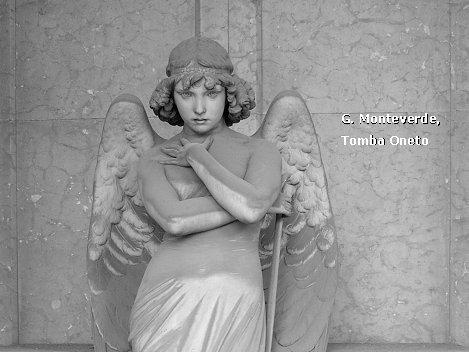The androgynous angel of this tomb, which was placed here in 1882, represents well the historical “breaking point” in the passage from a positivist idea of death, which used to be expressed the best way during the Realism, to a more doubtful one which would lead to the Symbolism. During this process of renewal, the angel loses its Christian role of a guide to the heaven and becomes a witness of the mystery of the nothingness: in fact the angel doesn’t offer any kind of comfort, it simply looks far and impassive. The sculptor Giulio Monteverde gives also the angel some feminine traits, thus letting emerge the dualism between Eros and Thanatos, which the funerary sculpture has been filtering for a long time through some sublimated representations of virtues and sorrow-stricken figures. The figure’s clear sensuality, which in that time was very bold and arose mixed reactions among the critics, has determined the statue’s fortune: the sculptor Monteverde has repeated it many times not only in Italy, but also in Europe and across the Atlantic. The commissioning of such an ambiguous and mysterious funerary monument by a bourgeois as Francesco Oneto, who has been a businessman and a banker, gains in importance, because it testifies the crisis of the positivist certainties which was affecting precisely that social class which used to be the greatest supporter of these certainties.



